What Hi-Fi? Verdict
While it’s a beautiful performer, the Z2 is only really worth it over the G2 if you’re very confident that 8K content is around the corner – and we’re not
Pros
- +
Beautiful, balanced picture quality
- +
As bright as OLED currently gets
- +
Strong sound
Cons
- -
Pathetic, flimsy feet
- -
Essentially the same picture as the G2
- -
No 8K content worth watching
Why you can trust What Hi-Fi?
8K TVs have a tough task, and it gets tougher each year. Commercially available, realistically priced 8K TVs have been on sale since 2019, yet, a selection of YouTube videos aside, there’s still no native 8K content available – nor any on the horizon.
The companies producing 8K TVs therefore need to convince us that either 8K content really is on the way, and/or that an 8K TV offers benefits beyond its 4K counterparts even without 8K content. The former looks like an impossible task, but Samsung has been surprisingly successful at convincing us of the latter, with its flagship 8K sets upscaling content so effectively that it regularly looks better than 4K. LG, though, has been less forthcoming with samples of its 8K Z series OLED TVs. Until now.
Unshackled from its ultra-premium ‘Signature’ branding, the 77-inch LG Z2 we have before us (its 88-inch sibling is still Signature-designated) is substantially more affordable than its predecessors while still offering the tantalising potential of 8K and OLED combined. That said, it’s still vastly more expensive than LG’s best-ever 4K OLED, the new G2. Can it possibly justify the extra outlay in a pre-8K world? Testing the two TVs side-by-side ought to answer that question…
Price

While much cheaper than its predecessor, the LG OLED77Z2 is still a very expensive TV, coming in at £12,000 / $13,000 / AU$23,999.
The 77-inch version of the 4K G2 (OLED77G2) is a comparative snip, costing ‘just’ £4299 / $3800 / AU$8076.
If you’re wondering how the Z2 compares on price with other 8K TVs, Samsung’s flagship 75-inch model, the QE75QN900B, currently costs £6499 / $5500 / AU$8995.
Design
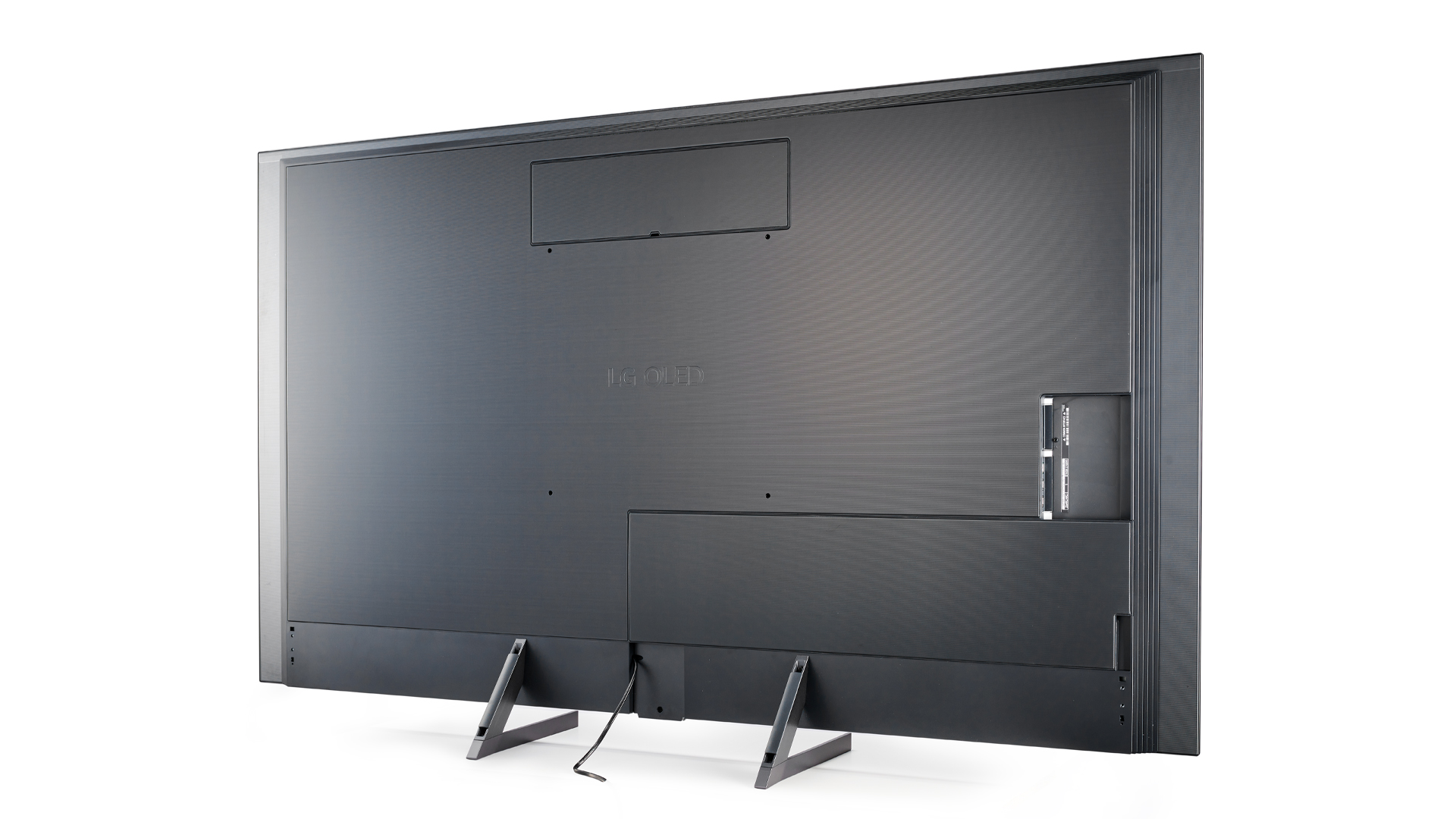
The fashion for minimalism in TV design (a fashion of which we entirely approve, for what it’s worth) leaves little room for frills or flourishes, so while it’s perhaps a slight shame that the Z2 doesn’t aesthetically scream "I am the future!" at you, it’s not exactly a huge surprise. Overall, it’s more like a G2 than a C2, with the plastic casework spread fairly thinly and evenly over the panel’s rear rather than concentrated in one, thicker area. It’s not quite as overtly picture frame-designed as the G2, though, and it’s a touch thicker, too, at 3.2cm to the G2’s 2.5cm.
The latest hi-fi, home cinema and tech news, reviews, buying advice and deals, direct to your inbox.
Unlike the G2, which comes with no stand at all, the Z2 comes with feet in the box. However, while that is objectively a positive, the feet are absolutely appalling – ugly and flimsy, they have no right being attached to a TV costing five figures. You can at least attach them fairly close to the centre of the TV for a relatively thin footprint.
The Z2 comes with its own version of the Magic Remote that’s bundled with LG’s other OLEDs and most LCD models. Functionally, there’s nothing new here – the button layout is identical, as is the motion-sensitive pointer feature – but the silver finish looks and feels more premium and the more angular shape is actually more ergonomic than you might imagine.
Features
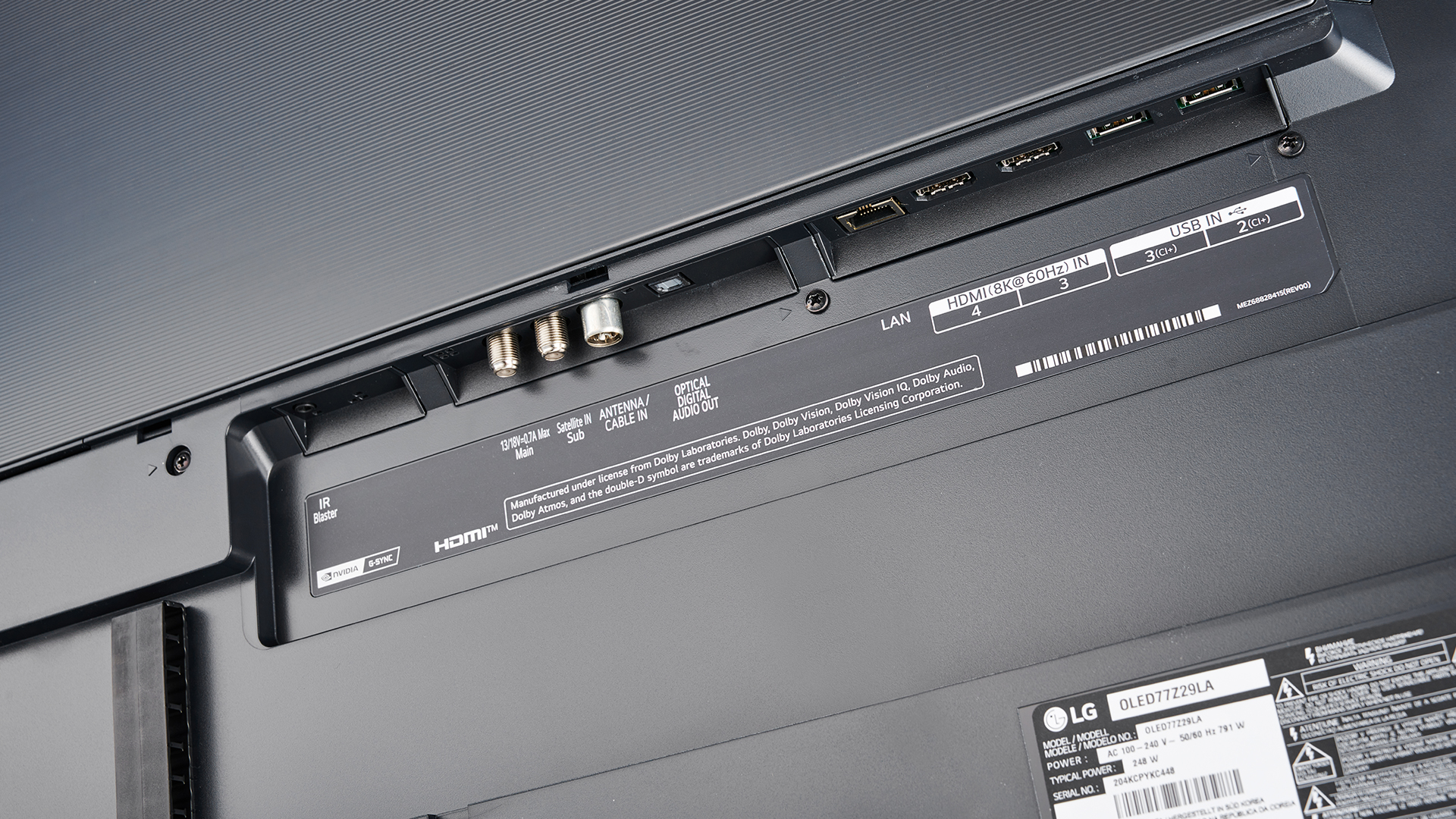
The big news here, of course, is that this is an 8K TV with a 7680 x 4320 resolution. That’s over 33 million pixels, and because this is an OLED TV, every one of those pixels can be lit and coloured independently of the rest. That’s a hugely tantalising proposition.
Interestingly, the Z2 is not described by LG as an OLED Evo model. LG says this is because it doesn’t have the same a9 Gen 5 AI processor as the G2 and C2 OLED Evo models, instead having a more powerful 8K version of the chip, as well as unique picture algorithms. LG won’t go into detail about the heat dissipation technology in the Z2 either. The similarities in design between the Z2 and G2 – with the plastic enclosure covering more or less the whole rear of the panel – suggest that the Z2 could, like the G2, have a dedicated heatsink, but that’s just conjecture. It will be fascinating to see how close the Z2 is to the G2 on brightness.
If you’re wondering how you’re going to watch 8K content on your 8K TV, you’ll likely be disappointed to learn that a selection of YouTube videos is all you’ve got to choose from. What’s more, said YouTube videos offer limited entertainment value as they’re generally landscape and nature footage set to plinky-plonky music, and are of surprisingly low quality, to the extent that we felt the need to double-check that we were indeed receiving 8K (we were).
Of course, this isn’t a problem that’s exclusive to the LG Z2 – YouTube is simply the only source of 8K content currently available. The job, then, is to make non-8K content look better than it does on a native 4K TV, and to this end the Z2’s a9 Gen5 AI Processor 8K uses deep learning in order to analyse and optimise the picture in real-time. This deep learning is applied not only in relation to upscaling, but also HDR tone mapping, noise reduction, edge sharpening and depth enhancement.
There’s no end of non-8K content to watch on the Z2 as well. It features the same webOS22 platform as its 2022 4K siblings, and while it’s not as good as 2020’s pop-up platform, it does at least have every streaming service you’re ever likely to need, complete with 4K and Dolby Vision where appropriate.
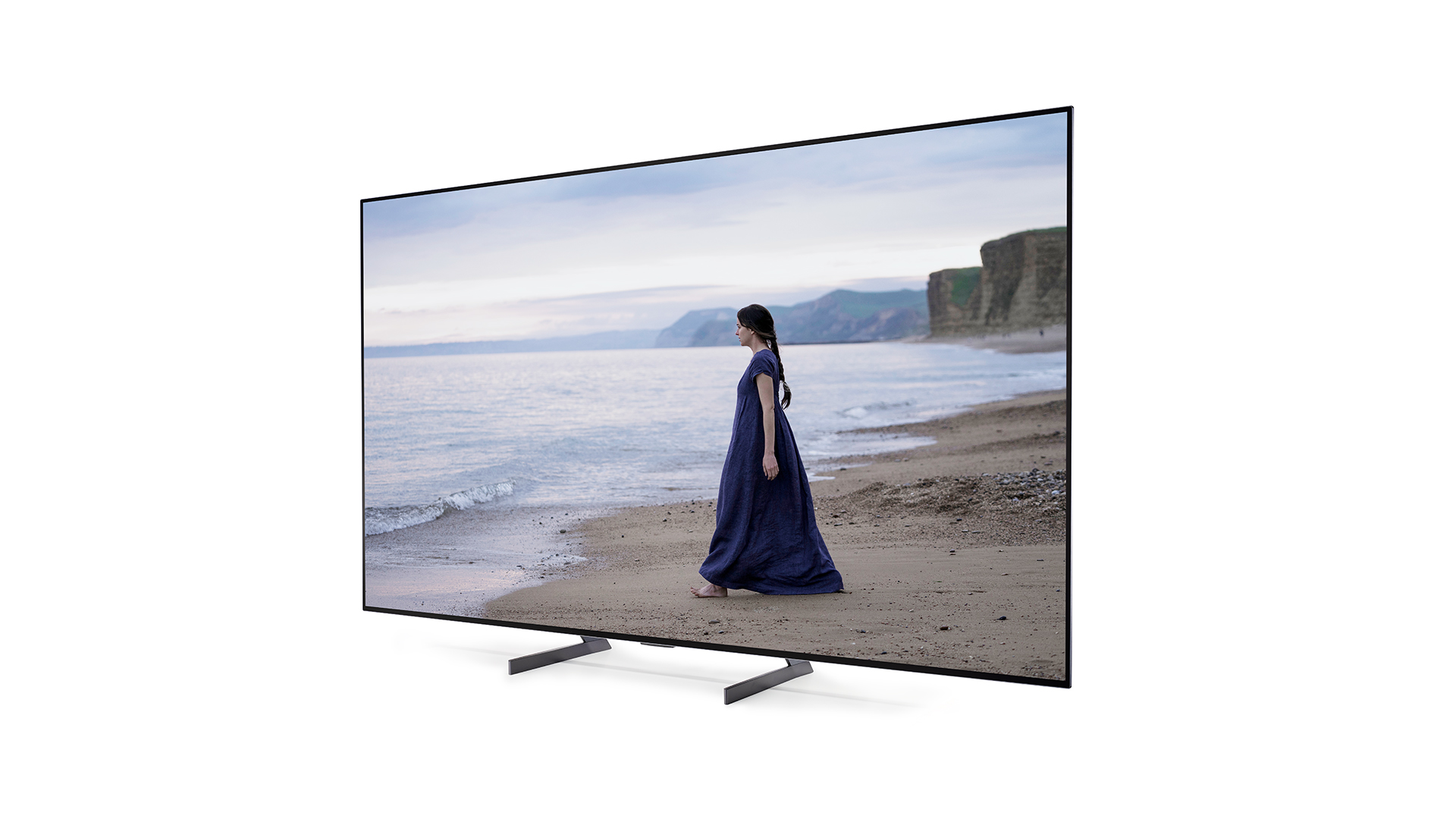
Screen size 77 inches (also available in 88in)
Type OLED
Backlight N/A
Resolution 8K
HDR formats supported HDR10, HLG, Dolby Vision
Operating system webOS22
HDMI inputs 4 x 48Gbps HDMI 2.1
Gaming features 4K/120, VRR, ALLM
ARC/eARC eARC
Optical output Yes
Dimensions (hwd, without stand) 98 x 172 x 3.2cm
On the subject of Dolby Vision, the Z2 supports Dolby Vision IQ, a very useful feature that automatically adjusts the brightness and contrast of Dolby Vision content according to ambient lighting conditions so that, in particular, shadow details aren’t lost when the living room lights are on. This feature will also soon be getting an upgrade to Dolby Vision IQ Precision Detail, which is designed to reveal even more detail, particularly in dark scenes. On top of Dolby Vision, the more common HDR10 and HLG formats of HDR are also supported, though HDR10+, predictably, is not.
Like its 4K siblings, the Z2 boasts four HDMI 2.1 sockets. Here they’re capable of supporting 8K/60Hz signals, should 8K sources materialise at some point in the future. In the meantime, those connections already support 4K/120Hz signals from the Xbox Series X/S, PS5 and high-end gaming PCs, and gamers will also enjoy support for VRR and ALLM. What’s more, the Z2 (again, like LG’s 4K models) has an excellent HGiG mode that gives you more accurate HDR performance from many games, and a Dolby Vision game mode – something LG is currently alone in providing and can work wonders with some Xbox games. Input lag measures a very low 14ms with 1080p signals, and this should lower significantly when gaming in 4K. All told, you can’t buy a better-specified gaming TV.
Picture
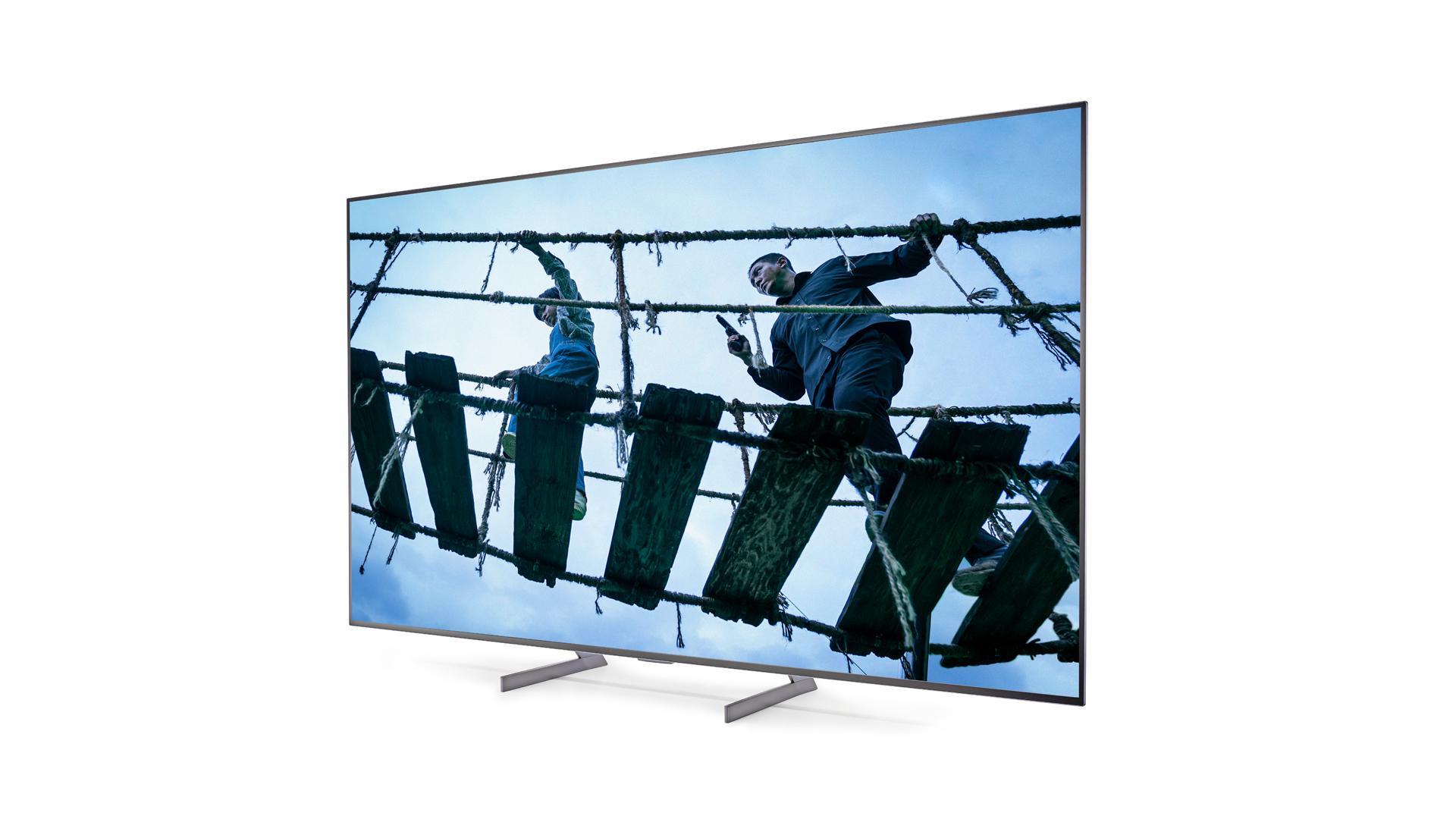
You might think that a super-dark movie such as The Batman would be meat and drink to an OLED TV, but while most models will deliver the requisite perfect blacks, few are capable of combining that with the contrasting pop and shadow detail that the Z2 can muster. Watching the 4K Blu-ray in Dolby Vision, the chapter one montage of criminals peering into eery, potentially Batman-filled shadows is made all the more effective by the subtle details that the Z2 reveals within. The bright video billboards of Gotham Square, meanwhile, punch through the gloom and rain in appropriately attention-grabbing fashion, and there’s a lovely depth and solidity to the grim cityscape as a whole.
Switching to the new 4K Blu-ray of Drive, the Cinematic Movement motion processing option handles the pan across the hotel room very well, smoothing without adding artificiality. The Z2 takes the same balanced approach to detail and sharpness. The characterful, craggy lines of Bryan Cranston’s face are brilliantly resolved but natural, while the bodywork lines of The Driver’s 1973 Chevy Malibu (did you know that Ryan Gosling apparently chose, took apart and then rebuilt this car for the movie?) are crisply defined without looking exaggerated.
Colours are very well judged across all of the content we watch during testing. There’s a very gentle boost to the greens of the fields and hills of Three Billboards Outside Ebbing, Missouri, streamed in 4K HDR10 via the Apple TV app, that makes it just a smidge less authentic than the delivery of the Sony A95K, but the overall balance of naturalism and vibrancy is always a pleasure and there’s a consistent subtlety of shading that ensures skin tones in particular are very convincing.
As you’ve likely gathered, the Z2 is an exceptional picture performer, but there is one slight issue – it’s not noticeably better than the 77-inch LG G2. In fact, despite the Z2’s increased resolution, different processor and non-Evo status, you’d be hard-pressed to pick out any differences between it and the G2 with real-world content. On the one hand this is in itself deeply impressive, given how good the G2 is and how much extra processing the Z2 is having to do in order to upscale sub-8K content to its 8K display, particularly when said content is 1080p and even standard-def, but you’re paying a huge amount of extra money to get a performance that’s not noticeably better. Crucially, that’s not the case if you opt for Samsung’s top 8K TV (the QN900B), which does offer a slight but undeniable picture performance boost over the company’s top 4K model (the QN95B) – and the 8K tax in Samsung’s range is vastly lower than it is in LG’s.
Sound

There is one area in which the Z2 is a significant improvement on other LG OLEDs, and that’s the sound. On paper, there’s no difference between the audio system of the Z2 and G2 – both have 60W, 4.2-channel, down-firing arrangements – yet the Z2 sounds absolutely miles better than its 4K equivalent.
Playing the ultra-challenging, bassy opening to chapter two of Blade Runner 2049, in which K flies over LA to the police precinct, there’s vastly more weight to the Z2’s delivery. And while the G2 is a touch lacklustre in terms of dynamics, the Z2 capably delivers both the individual peaks and the overall dynamic increase. There’s more detail and clarity, too, and a directness that makes for much improved engagement.
Overall, this is a very good audio performance by TV standards, but it obviously can’t hold a candle to a well-sorted home cinema system or soundbar, and if you’re paying this sort of money for a TV and not budgeting for a dedicated sound system to go with it, something has gone terribly wrong.
Verdict
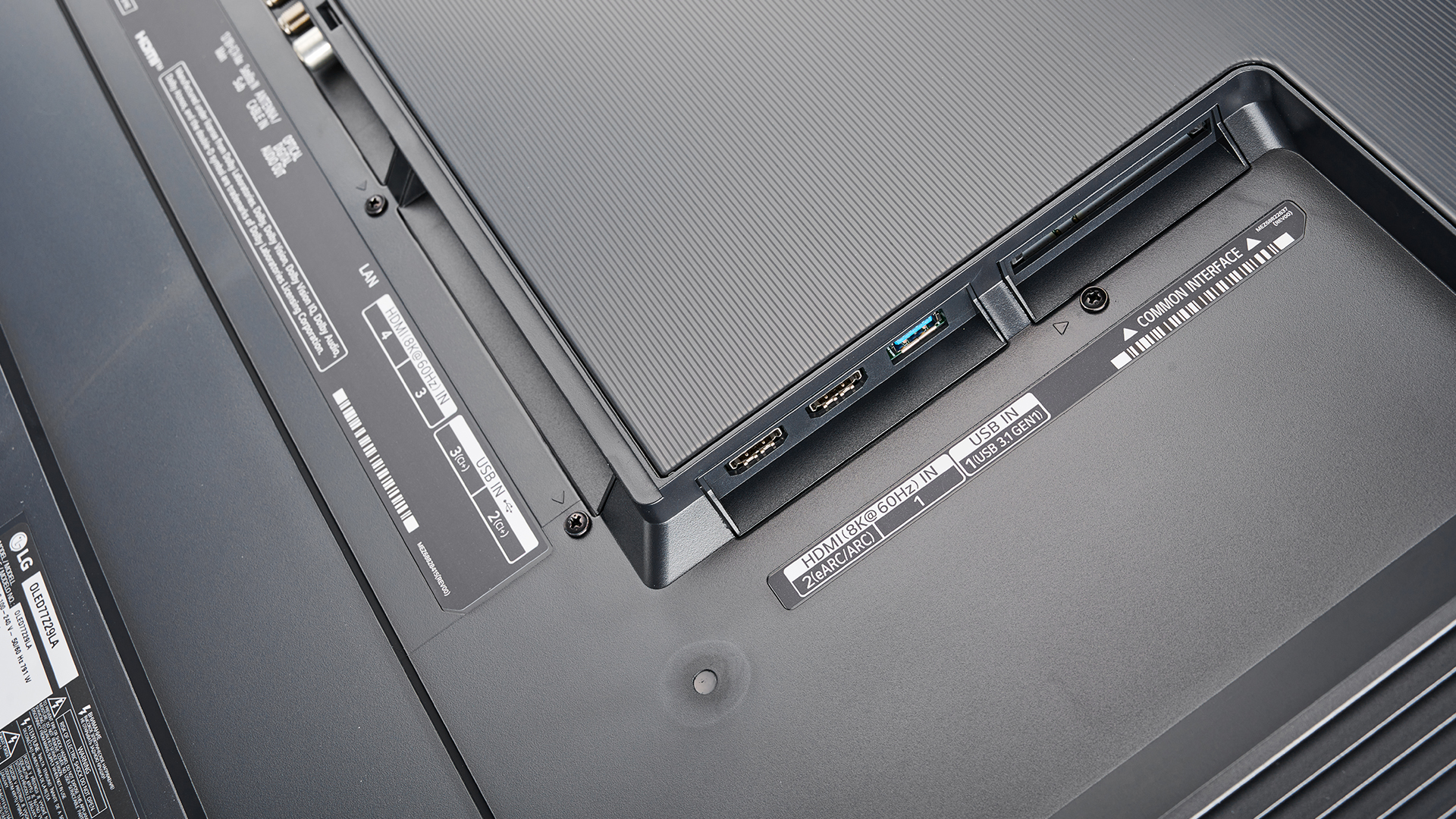
In some ways, the Z2 is a hard TV to rate. It is, in its own right, an absolutely lovely TV that handles everything you throw at it with a pitch-perfect combination of excitement and naturalism.
The problem is that the 77-inch G2 delivers essentially the same picture performance for around a third of the Z2’s price. Yes, the Z2 sounds better than the G2, but to an extent that justifies all of that extra money? No.
If you absolutely must have an LG OLED and absolutely must have 8K, then the Z2 is obviously the TV for you, but we suspect the intersection on that particular Venn diagram is naught but a sliver. So while the Z2 is an excellent TV, we suspect most people will be best served by either a 77-inch G2 or a 75-inch Samsung QN900B, depending on whether OLED or 8K is the greater priority.
SCORES
- Picture 5
- Sound 5
- Features 5
MORE:
Read our review of the Samsung QE75QN900B
Also consider the LG OLED65G2
Best OLED TV: brilliant budget and premium OLED TVs
Tom Parsons has been writing about TV, AV and hi-fi products (not to mention plenty of other 'gadgets' and even cars) for over 15 years. He began his career as What Hi-Fi?'s Staff Writer and is now the TV and AV Editor. In between, he worked as Reviews Editor and then Deputy Editor at Stuff, and over the years has had his work featured in publications such as T3, The Telegraph and Louder. He's also appeared on BBC News, BBC World Service, BBC Radio 4 and Sky Swipe. In his spare time Tom is a runner and gamer.
- Ketan BharadiaTechnical Editor

